I’m tired of hearing about Nikola Tesla. He wasn’t the noble crusader and misunderstood genius many people try to make him. I have often been called stupid or ignorant for saying this. I have often been told to look into Tesla’s history, as though I hadn’t already done that. Some people just won’t accept the possibility that they haven’t learned the facts.
Tesla was an eccentric electrical engineer who lived from 1856-1943. He came to the US in 1884.
There is a sort of mystique about Tesla. Many people believe that Tesla was a wonder worker, but everyone hated him and they all turned away from him and stole his inventions. This simply is not what happened.
Tesla did not invent electricity. People have actually claimed that Tesla invented electricity. I can’t even understand how this notion could get started. The Greeks played around with static electricity thousands of years ago, as early as 600 BCE, using amber to generate it. In fact, the word ‘electron’ comes from the Greek word for amber.
Many workers throughout the centuries have played around with electricity, including Alessandro Volta, Luigi Galvani, Benjamin Franklin, and many others. Franklin showed that lightning was electrical in nature. Volta created some of the first batteries for producing electricity.
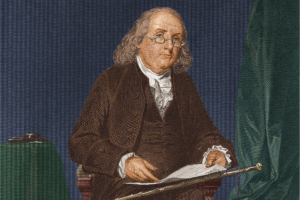
Tesla did not invent alternating current (AC). AC is produced when you generate electricity with a moving coil and permanent magnets. There is nothing mystical about it. The first alternating current generator was made by Hippolyte Pixii in 1832.
The principles of alternating current were well understood, following the work of Michael Faraday. Faraday did his work before Tesla was born. In fact, Faraday died when Tesla was 11 years old. So, no, Tesla did not invent or discover alternating current.
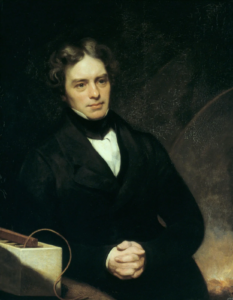
AC had always been the only practical way of distributing electrical energy to any significant distance. This fact was well known throughout the industry.
When distributing electricity, wires are required. These wires always have some resistance, so when current passes through them, heat is given off. This heat is wasted energy, and is to be avoided if possible.
One way to reduce waste is to reduce the current by boosting the voltage, using transformers. A step-up transformer can be used to boost the voltage to thousands of volts, which will reduce the current accordingly. The amount of waste is greatly reduced. When the electricity gets to the point where it will be used, transformers are again used, this time to step down the high and dangerous voltage to something safer and useful. In order for these transformers to work, AC must be used.
Tesla didn’t invent the transformer. That was Ottó Bláthy and William Stanley, Jr.
DC was never a practical means of distributing electrical energy to any great distance. It was not feasible to change the voltages, so there was no way to avoid serious losses from heating the wires. The generators would have had to be within a short distance of the customers, not more than a mile or two. Thomas Edison tried to get DC to be the current of choice, but he never really had a chance.
This might be a good place to clear up another misunderstanding. Some have said that Tesla was attacked by Thomas Edison for wanting to use AC in transmission lines. Tesla, all alone, standing up to the wealthy and famous Edison, David vs Goliath, yadda-yadda-yadda. There was a war of the currents. However, it was between Edison and Westinghouse. Tesla was not involved in this war.
Tesla did not invent the telegraph. That was invented by Samuel FB Morse, in the 1840’s and 1850’s – before Tesla was born. There is more information about the history of the telegraph here.
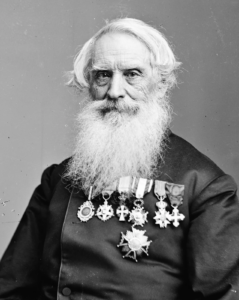
Tesla did not invent the telephone. That was invented by Alexander Graham Bell in 1876. In fact, a man named Elisha Gray submitted his application for a patent on his version of the telephone on the same day as Bell did. The idea of a telephone was not particularly obscure. What was needed was to find a way to convert speech into electrical signals and then back to sound.
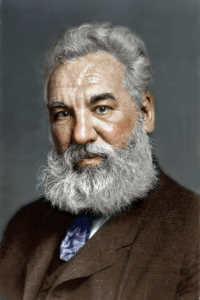
Tesla did not invent or discover radio waves. Radio waves were predicted by James Clerk Maxwell in 1865, as an outcome of the famous equations bearing his name. In fact, it was Maxwell who first realized that electromagnetic radiation and light must be the same basic thing – that light itself was a form of electromagnetic radiation.
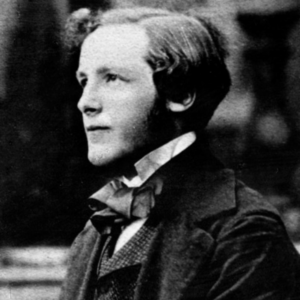
Radio waves were discovered by Heinrich Hertz in 1879. At the time, Tesla was not working with electricity.
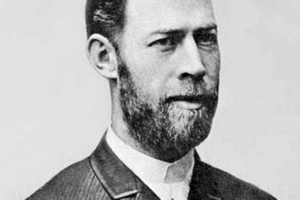
Tesla did not invent radio communication. This was done primarily by Guglielmo Marconi, who first transmitted radio signals across the Atlantic Ocean. Tesla had no involvement with this.
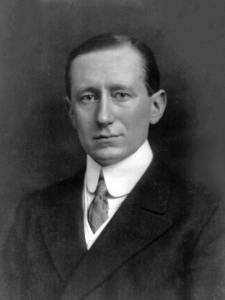
Tesla was not unappreciated or impoverished during his working career. In 1888, he received $60,000 for patents he sold. That would be over a million dollars in today’s money. George Westinghouse hired Tesla as a consultant at $2000 per month, which would be around $50,000 or so in today’s money. Per month.
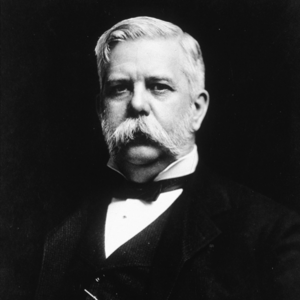
In 1891, Tesla released Westinghouse of a financial burden of $15,000 per year, when Westinghouse’s business was financially troubled. This is often cited as Tesla’s unconcern with money and his kindness, but the truth is somewhat less noble. Basically, if Tesla didn’t release this obligation, Westinghouse would go under, and Tesla would have to deal with banks to try to get his money.
In 1897, Westinghouse paid Tesla $216,000 for his patents. This would be several million dollars in today’s money. Tesla was independently wealthy.
There is an anecdote about how Thomas Edison cheated Tesla. Supposedly Edison told Tesla that if he could perform some technical work, Edison would pay Tesla $50,000. Tesla did the work, and then Edison supposedly said, “Tesla, you don’t understand about American humor.” Because of this, Tesla quit working for Edison.
In fact, it was not Edison who did this to Tesla, but a manager.
In his autobiography, Tesla speaks highly of Edison. In one place he refers to meeting Edison:
The meeting with Edison was a memorable event in my life. I was amazed at this wonderful man, who without early advantages and scientific training, had accomplished so much.1
Tesla did not invent free energy. No one did. Tesla tried to invent a means of transmitting electricity wirelessly. However, this was never a practical means of distributing electrical energy. Tesla’s belief that the Earth was a good conductor of electricity was without basis, and so his invention failed. The range was too short, and there were too many losses, to ever make this practical. The reason his Wardenclyffe tower was sold was because his notion of transmitting electricity simply did not work.
Tesla did not discover X-rays, though he came close. X-rays were discovered by Wilhelm Conrad Röntgen in 1895. Tesla evidently produced X-rays accidentally in 1894, but did not recognize what it was, and did not develop the technology or publish anything about it.
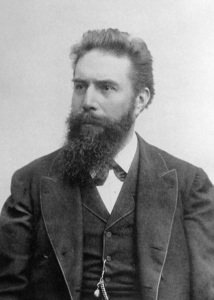
It is claimed that Tesla invented some sort of death ray, and was so horrified at the potential misuse that he stopped work and destroyed his notes and experiments. In fact, Tesla tried to interest the US War Department, and governments of the UK, Yugoslavia, and the Soviet Union. He also claimed, in 1937, that he had built the device and that it worked.
It turned out that part of Tesla’s “death ray” device was simply a piece of lab equipment known as a decade resistance box.
In 1899, Tesla got financial backing from John Jacob Astor in the amount of $100,000. That’s over $3,000,000 in today’s money.
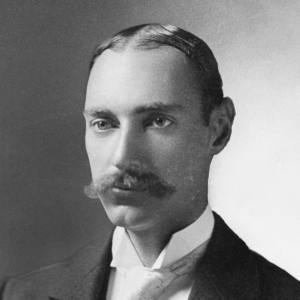
JP Morgan funded Tesla’s work with $150,000 – over $4,000,000 in today’s money. This was in 1901.
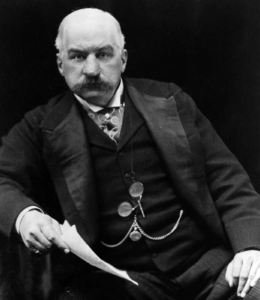
These payments and investments are strong evidence that at the time, Tesla was respected and well-paid. This makes it highly unlikely that Tesla ever complained to his mother that he was subjected to ridicule. Tesla’s mother died in 1891. Tesla at the time had plenty of money and backers.
It is a common notion that Tesla was shunned by the world, forgotten and allowed to fall into poverty in his old age. The facts do not support this notion.
For one thing, it was Tesla who shunned the world. He is repeatedly quoted as saying things like, “Be alone, that is the secret of invention; be alone, that is when ideas are born.” If a guy spends his working career avoiding people, people can be excused for not chasing him down. And yet they did chase him down.
When Tesla turned 75, a journalist organized a birthday celebration for him. Tesla liked that so much that he continued to have birthday parties for himself for several more years, inviting the press and making wild claims of new inventions that somehow never saw the light of day.
So wasn’t forgotten. In fact, George Westinghouse paid Tesla’s hotel bills towards the end of Tesla’s life, along with a small monthly allowance.
Much has been made of the fact that upon Tesla’s death, the FBI caused his belongings to be seized. The thinking is that the FBI stole Tesla’s greatest inventions. In fact, this was a reasonable step. The US was at war at the time with the Nazis, and Tesla’s country of birth was “Austria” on his naturalization papers. Austria was part of the Nazi Reich. There is no evidence that Tesla ever approved of the Nazis, but Tesla had spoken of many powerful inventions that could be turned into weapons. No one knew just what sorts of weapons Tesla might have invented. It was thought better for the US to take possession of anything of that nature. It turned out that there were no weapons. Nevertheless, this incident is the basis for any number of conspiracy theories and urban legends.
I will note that many of the claims for Tesla’s accomplishments come from a single source – Tesla’s autobiography. He was not altogether truthful in some of his claims. Certainly, he was not objective.
I think what happened was that Tesla always made good copy for journalists looking for a story. Death rays, communicating with Mars and Venus, devices that can show your thoughts – people loved that sort of thing. It didn’t really matter whether any of it was true. Who cares? It sold newspapers and magazines, and that’s what mattered.
In the meantime, Tesla was busy promoting himself, making claims he couldn’t fulfill, seeking the startling and impressive in order to get funding, keeping himself in the limelight. He talked a good game, but he never could quite do what he claimed he could.
Over time I think he began to lose touch with reality, his claims becoming increasingly outlandish. He had enough standing that some people listened, and some people actually believed him. But he simply couldn’t do it.
Part of the problem is that Tesla didn’t understand physics; in fact, he simply ignored physics. He thought the Earth was a good conductor of electricity, which would have meant he might have produced wireless electrical transmission. Unfortunately, the Earth is not a good conductor of electricity, a fact well-known to the physicists and engineers at the time. By ignoring such facts Tesla doomed his projects to fail.
If Tesla was a genius, it was not in physics or engineering or science. It was in self-promotion.
1My Inventions: The Autobiography of Nikola Tesla
